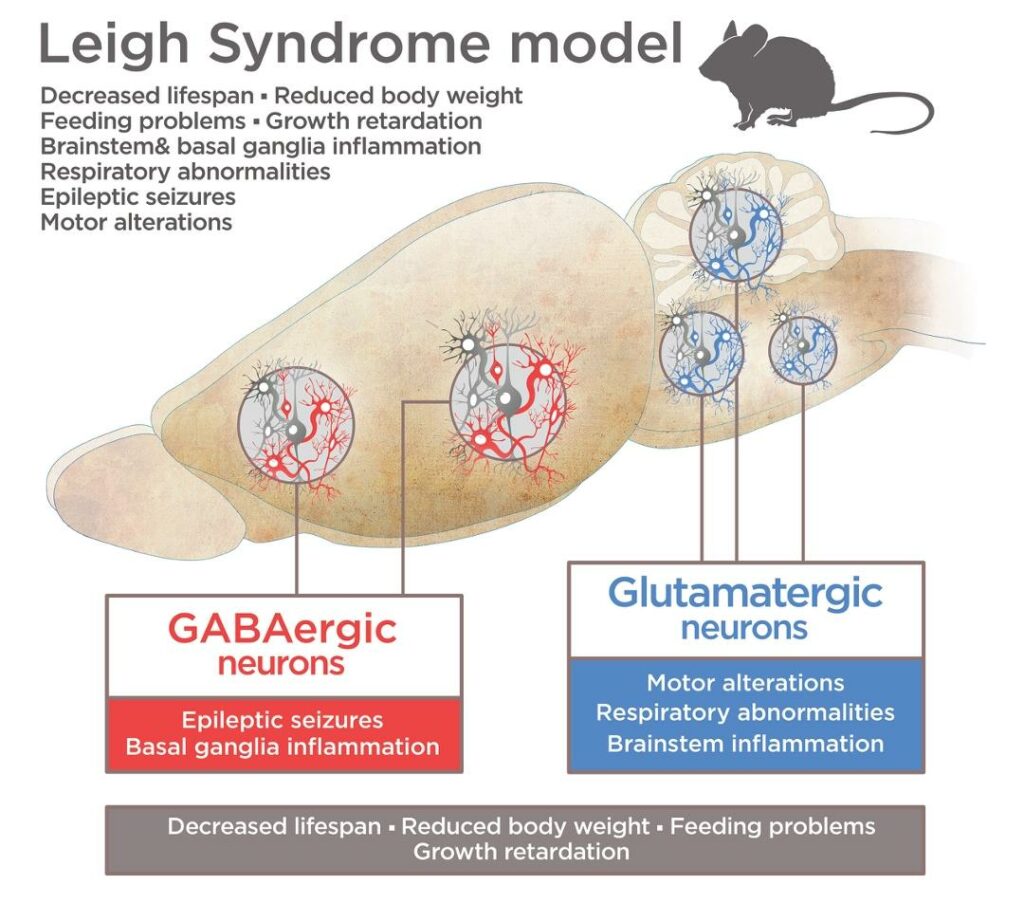
We have a new article! Elife published our study in Leigh Syndrome, the most common mitochondrial disease with affectation of the central nervous System. In this disease, there are two brain regions that are particularly compromised: the brainstem (that controls all basic functions that keep us alive) and the basal ganglia, involved in refining motor coordination. In our study, we wanted to explore the role the protein Ndufs4 has in this affectation.
Ndufs4 is a subunit of the Complex I. It is located in the mitochondrial membrane and is involved in the respiratory chain. We knew that animal models lacking this subunit in all their cells reproduce the classical signs of Leigh Syndrome, but do symptoms appear due to all cells in the body not working properly, or some specific cells are responsible for them?
To study this, we selectively inactivate the gene codifying the protein Ndufs4 in three neuronal populations we suspected could be key, and keep it working in all other cells in the body. Observing what symptoms remained we could know the role of these neurons in the alterations these patients suffer.
What we found was that the inactivation of this subunit in a certain kind of excitatory neurons (the fancy-scientist name is vlgut2-expression glutamatergic neurons) caused brainstem inflammation, motor and respiratory deficits, and early death; and that its inactivation in inhibitory (GABAergic neurons) led to basal ganglia inflammation, severe refractory epileptic seizures and premature death.
These results are very important to contribute understand the underlying cellular mechanisms of Leigh Syndrome, as we identified which specific neurons are behind the brain alterations. Therefore, now we have new knowledge to try to identify which cellular aspects are failing in those cells so we can start to envisage different methods to correct them.
Congrats to all the team and collaborators!